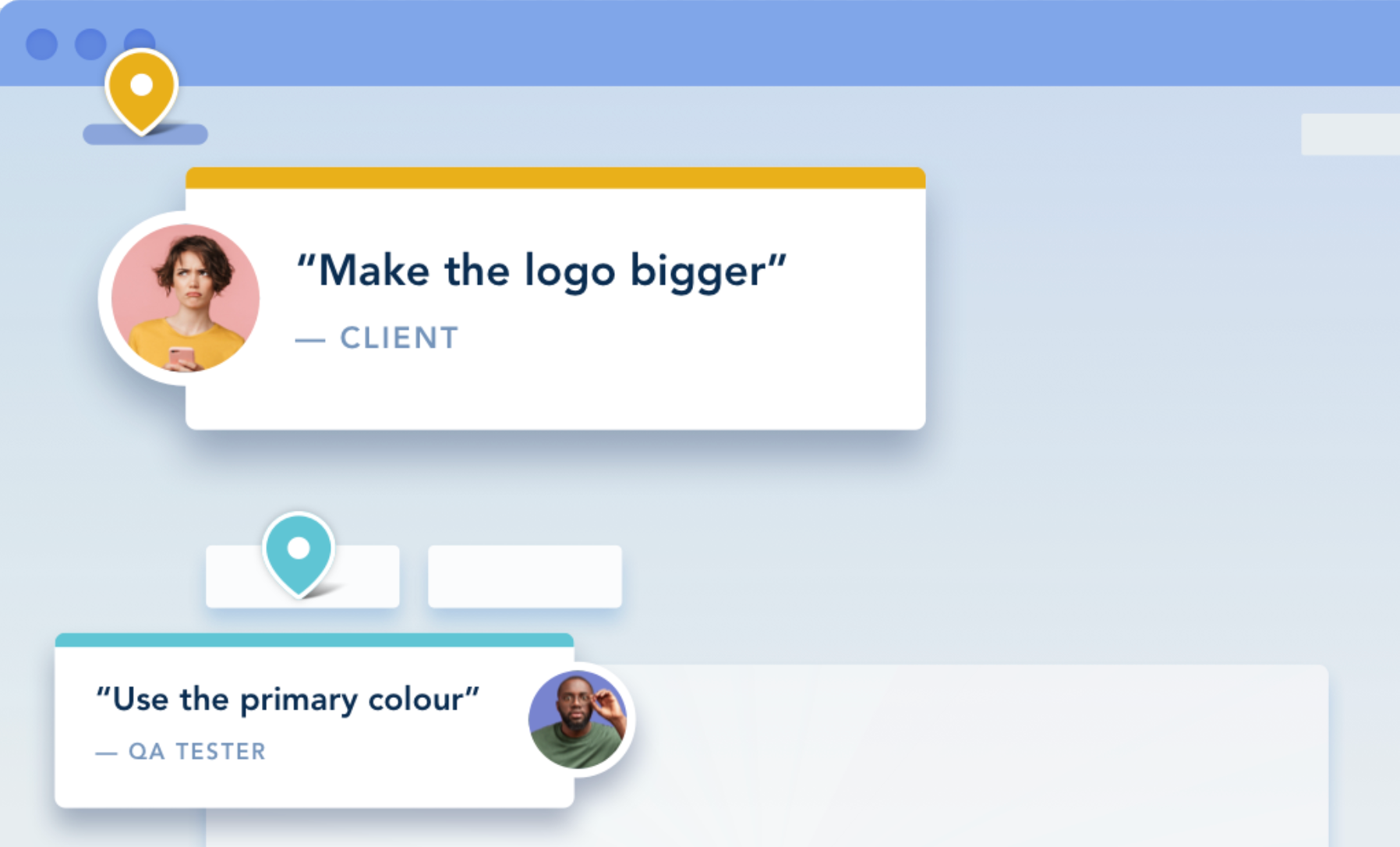BugHerd CEO and former agency owner, Stephen Neville caught up with leading UK Agency Advisor and Coach, Rob Sayles, who has been working with creative and marketing agencies for 20+ years, helping them enhance performance, client value, and operational efficiency.
Together they explored some strategies for increasing client retention, effectively upselling, and reducing operational costs while boosting productivity. By implementing these tactics, agencies can maintain a profitable business now and in the future.
Here are the top highlights:
The importance of client retention
It is significantly more cost-effective to retain and upsell to existing clients than to acquire new ones. In fact, acquiring new clients can be five to 25 times more expensive than nurturing existing relationships.
In challenging economic times, pipelines can dry up, and conversion rates may plummet, leading to longer lead times and stiffer competition. In such an environment, it’s crucial to maximize the value of existing client relationships in order to retain existing clients. Not only does this approach save on acquisition costs, but it also helps maintain a steady revenue stream.
By focusing on client retention, agencies can weather the storm of a recession more effectively. While some agencies are thriving, they are the exceptions. For the majority, it’s essential to nurture the opportunities they already have rather than constantly chasing new ones.
Building Stronger Client Relationships
Many agencies fall into the trap of only communicating with clients when sending invoices or project updates. However, this minimal level of interaction is not enough to foster long-term loyalty.
Instead, agencies should aim to engage with clients regularly through various touchpoints:
- Scheduled check-ins
- Feedback surveys
- Informal conversations
The goal is to create a continuous dialogue that not only addresses immediate project needs but also explores future opportunities.
It’s important to personalize these interactions. By understanding the individual personalities and preferences of client contacts, agencies can tailor their communication style and approach to suit each client. This personalized service helps clients feel valued and understood, which can lead to stronger, more lasting relationships.
The Upselling Opportunity
When done correctly, upselling is a natural extension of successful client relationships. It should not be about pushing more products or services onto clients but rather about identifying additional needs and offering solutions that genuinely add value. This approach requires a deep understanding of the client’s business, challenges, and future goals.
To successfully upsell, agencies must establish strong relationships with their clients. Regular communication is key, as it helps to build trust and enables agencies to better understand their clients’ evolving needs.
By maintaining a detailed record of conversations and insights, agencies can proactively suggest new services or enhancements that align with the client’s objectives. Using tools like CRM systems to track client interactions, preferences, and potential upsell opportunities is a must.
Reducing Operational Costs and Boosting Productivity
In a market where every dollar counts, agencies need to be laser-focused on efficiency, streamlining operations and improving overall agency performance.
- Centralizing Information and Improving Tool Usage
One of the most common challenges agencies face is managing information across multiple platforms and tools. Many agencies suffer from tool gaps, overlaps, and inconsistent usage. For example, while an agency might have a central project management system, some team members might still rely on spreadsheets or other standalone tools. This fragmented approach can lead to inefficiencies, miscommunication, and ultimately, higher operational costs.
To combat this, centralizing all project-related information in one system is imperative. This ensures that everyone has access to the latest data, reducing the risk of errors and duplication. Moreover, by standardizing tool usage across the agency, teams can work more collaboratively and efficiently.
Agencies should also regularly audit their tool stack to identify any redundancies or underutilized tools. By streamlining the number of platforms in use and ensuring that each tool serves a clear purpose, agencies can reduce costs and improve productivity.
- Defining Roles and Responsibilities
A lack of clarity in roles and responsibilities can lead to significant problems. When team members are unsure of their responsibilities or assume that others will handle certain tasks, projects can fall through the cracks.
To avoid this, each team member must understand their role within the project and the broader organization. This includes having clear job descriptions, project assignments, and communication protocols. Regular team meetings and check-ins can help reinforce these roles and ensure that everyone is on the same page.
It’s also crucial to match the right people to the right projects. By aligning team members’ skills and expertise with project needs, agencies can improve the quality of their work and reduce the need for senior staff to step in and ‘rescue’ projects.
- Effective Resource Management
Resource management is another area where many agencies struggle. Poor resource management can lead to bottlenecks, missed deadlines, and overworked staff.
Using resource planning tools can greatly help in improving resource management and provide a clear overview of who is working on what and when. These tools can help agencies balance workloads, prioritize projects, and allocate resources more effectively. By forecasting resource needs in advance, agencies can avoid last-minute scrambles and ensure that they have the right team in place for each project.
- The Importance of Internal Projects
While client work is always a priority, it’s important to dedicate time to internal projects that can improve agency operations. This might include staff training, process optimization, or even cultural initiatives aimed at enhancing team collaboration and morale.
Many agencies neglect internal projects because they are too focused on client work. However, this short-term thinking can lead to long-term inefficiencies. By investing in internal projects, agencies can build a stronger foundation for future growth.
Creating a Culture of Open Communication
Many of the challenges agencies face stem from a lack of communication which is why it’s important to create an environment where team members feel comfortable sharing ideas, raising concerns, and suggesting improvements. This can be achieved through:
- regular team meetings / huddles
- open-door policies
- any feedback mechanisms that allow everyone to have a voice
The value of listening to all team members, regardless of their position cannot be underestimated. Sometimes, the best ideas come from junior staff who are on the front lines of project execution. By creating a culture where everyone’s input is valued, agencies can tap into a wealth of knowledge and experience that might otherwise go unnoticed.
One practical way to improve communication is by implementing weekly team huddles. These short, focused meetings provide an opportunity for everyone to check in, discuss ongoing projects, and address any issues or roadblocks. These should be kept brief and to the point, with a focus on actionable items and immediate concerns.
Weekly huddles can also be used to align the team on broader agency goals and priorities. By regularly revisiting these objectives, agencies can ensure that everyone is working towards the same outcomes and that resources are being allocated effectively.
The Role of Leadership in Driving Change
Leadership plays a crucial role in driving the changes needed to improve agency profitability and efficiency. Many of the strategies outlined so far (improving client relationships, optimizing operations, and fostering open communication) require strong leadership and a commitment to continuous improvement.
Leaders must be willing to make tough decisions, such as cutting underperforming tools or reallocating resources, to ensure the long-term success of the agency. They must also lead by example, demonstrating the behaviors and values they want to see in their teams.
Leaders should also be transparent about the agency’s goals, challenges, and progress. By keeping the team informed and involved in decision-making processes, they can build trust and buy-in for the changes being implemented.
One of the biggest challenges for agency leaders is balancing the short-term pressures of client work with the long-term goals of agency growth and sustainability. It can be difficult to prioritize internal projects or process improvements when there are immediate client demands to meet.
But this balance is essential for long-term success. By investing time and resources in improving operations and building stronger client relationships, agencies can create a more stable and profitable business model.
Leaders must also be mindful of their team’s workload and well-being. Overloading staff with too many clients or projects can lead to burnout, reduced productivity, and higher turnover. By managing resources effectively and ensuring that everyone has the support they need, leaders can maintain a healthy, motivated workforce.
Conclusion: Thriving in a Challenging Market
Agencies can successfully weather challenging market conditions by adopting a thoughtful and proactive approach. Prioritizing client retention and expanding existing partnerships, streamlining internal processes, and cultivating an environment of transparent communication are key steps toward maintaining profitability and ensuring sustainable growth. In a fluctuating economy, agencies that strategically leverage their strengths and invest in long-term improvements will be better equipped to thrive and secure their future.

















But don't just take our word for it.
BugHerd is loved by 10,000+ companies,
350,000+ users across 172 countries.
4.8/5
4.7/5
4.5/5
5/5
8.7/10
Sam Duncan 📱📏 🌱
@SamWPaquet
"@bugherd where have you been all my life??
We just migrated our bug tracking over from Asana and have at least halved our software testing time🪳👏📈. "
Ashley Groenveld
Project Manager
“I use BugHerd all day every day. It has sped up our implementation tenfold.”
Sasha Shevelev
Webcoda Co-founder
"Before Bugherd, clients would try to send screenshots with scribbles we couldn't decipher or dozens of emails with issues we were often unable to recreate."
Mark B
Developer
“A no-brainer purchase for any agency or development team.”
Kate L
Director of Operations
"Vital tool for our digital marketing agency.”
Paul Tegall
Delivery Manager
"Loving BugHerd! It's making collecting feedback from non-tech users so much easier."
Daniel Billingham
Senior Product Designer
“The ideal feedback and collaboration tool that supports the needs of clients, designers, project managers, and developers.”
Chris S
CEO & Creative Director
“Our clients LOVE it”
Emily VonSydow
Web Development Director
“BugHerd probably saves us
at least 3-4hrs per week.”